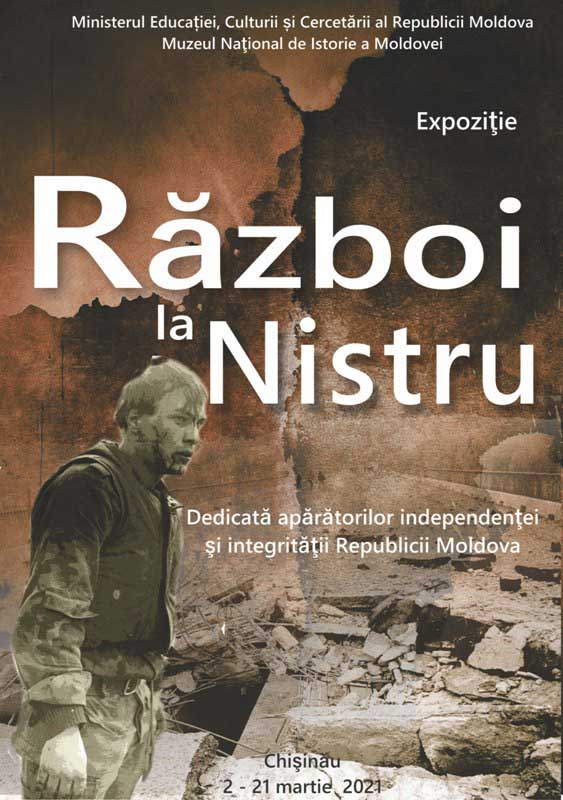 March 2, 2021 marks the 29th anniversary of the outbreak of armed conflict in the eastern districts of the Republic of Moldova, a conflict provoked by political adventurers and pro-imperialist revenge forces of the former Soviet empire.
March 2, 2021 marks the 29th anniversary of the outbreak of armed conflict in the eastern districts of the Republic of Moldova, a conflict provoked by political adventurers and pro-imperialist revenge forces of the former Soviet empire.
Under the invented pretext of "defending Russia's southern borders", they encouraged Transnistrian separatism, armed paramilitary guards, and sent thousands of mercenary Cossacks, criminals released from prisons, tanks, and Alazan missiles, hoping that with their help they will be able to revive the lost empire.
On March 2, 1992, when the President of the Republic of Moldova Mircea Snegur delivered, in the plenary session of the UN General Assembly, the speech of thanks on the occasion of the reception of the Republic of Moldova in the United Nations, groups of guards and Cossacks armed with submachine guns and armored vehicles stormed the headquarters of the Dubăsari district police station. There were the first fallen. To the south, in Vulcăneşti, another armed group attacks the district police headquarters. The same happens, simultaneously, in Tighina, Grigoriopol and Cocieri... Among the first to fall on duty then are: lieutenant-colonel Mihai Moraru, commissioner of the Hânceşti district police station; Iurie Bodiu, Valentin Slobozenco, Tudor Buga, Sergiu Ostaf, Vitalie Păvăluc, Victor Lavrentsov, Russian of nationality, a native of Tighina; Boris Dovgani from Pârâta, Serghei Culaţchi, the son-in-law of the brave fighter General Anton Gămurari... The lifeless bodies of Sergeant V. Purice and driver N. Galben from Tighina were taken from the waters of the Dniester.
Thus, the political conflict in the Dniester area degenerated into a real fratricidal war. Peaceful people were being attacked, entire villages were being held under Cossack fire, and more than 50,000 peaceful inhabitants of the Dniester area were forced to leave their homes, saving themselves from the scourge of war.
The ordeal begun in Dubăsari left behind hundreds of dead and crippled, orphans, widows, mothers with souls hardened by grief; it caused immeasurable material damage and loss on both banks of the Dniester.
More detailed sketches and chronicles of those dramatic events can be found in various sources: albums, monographs, collections of documents, memoirs, newspaper reports.
The commemorative exhibition "War on the Dniester" is also an attempt to reconstruct the reality of the Dniester tragedy.
It was conceived as a tribute to all participants in the struggles for the defense of the integrity and independence of the Republic of Moldova and, first of all, to those who sacrificed their lives on the altar of freedom of the Fatherland.
The exhibition brings together shocking images made in the conflict area by photojournalists T. Iovu, N. Pojoga, M. Vengher, A. Mardare, S. Voronin, T. Anghel, and others. The images reconstruct the ordeal that Moldavian defenders went through in the battles of Dubăsari and Tighina, on the plateaus of Cocieri and Coşniţa, immortalized the heroism and manhood of Moldavian police and volunteers, the hardships and humiliations of war, destroyed families, houses and villages, faces of women and children contorted by the pain of losing loved ones.
A special section of the exhibition is dedicated to the fallen fighters in defense of the independence and integrity of the Republic of Moldova.
The exhibition "War on the Dniester" was organized on the occasion of the 29th anniversary of the outbreak of the armed conflict on the Dniester and is dedicated to all defenders of the integrity and independence of the Republic of Moldova.
 31 August 1989 St., 121 A, MD 2012, Chisinau, Republic of Moldova
31 August 1989 St., 121 A, MD 2012, Chisinau, Republic of Moldova


















































